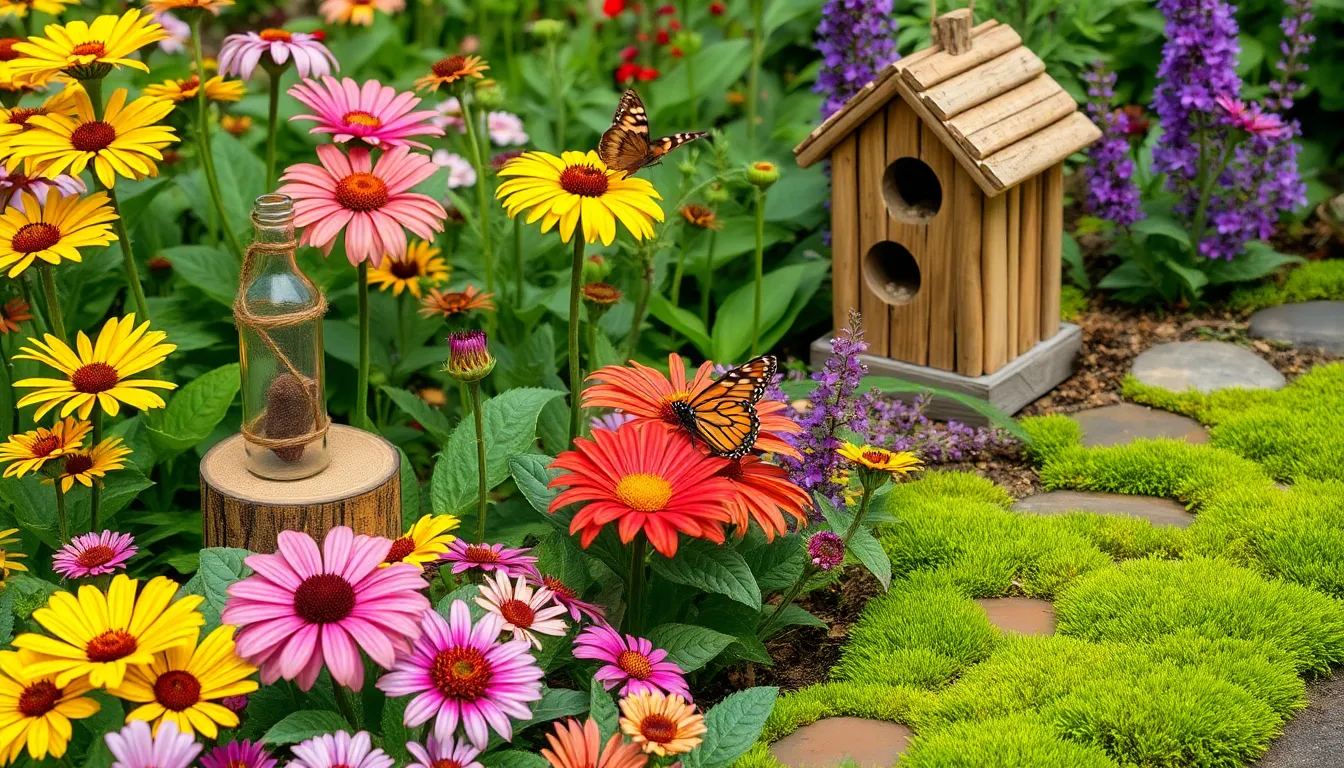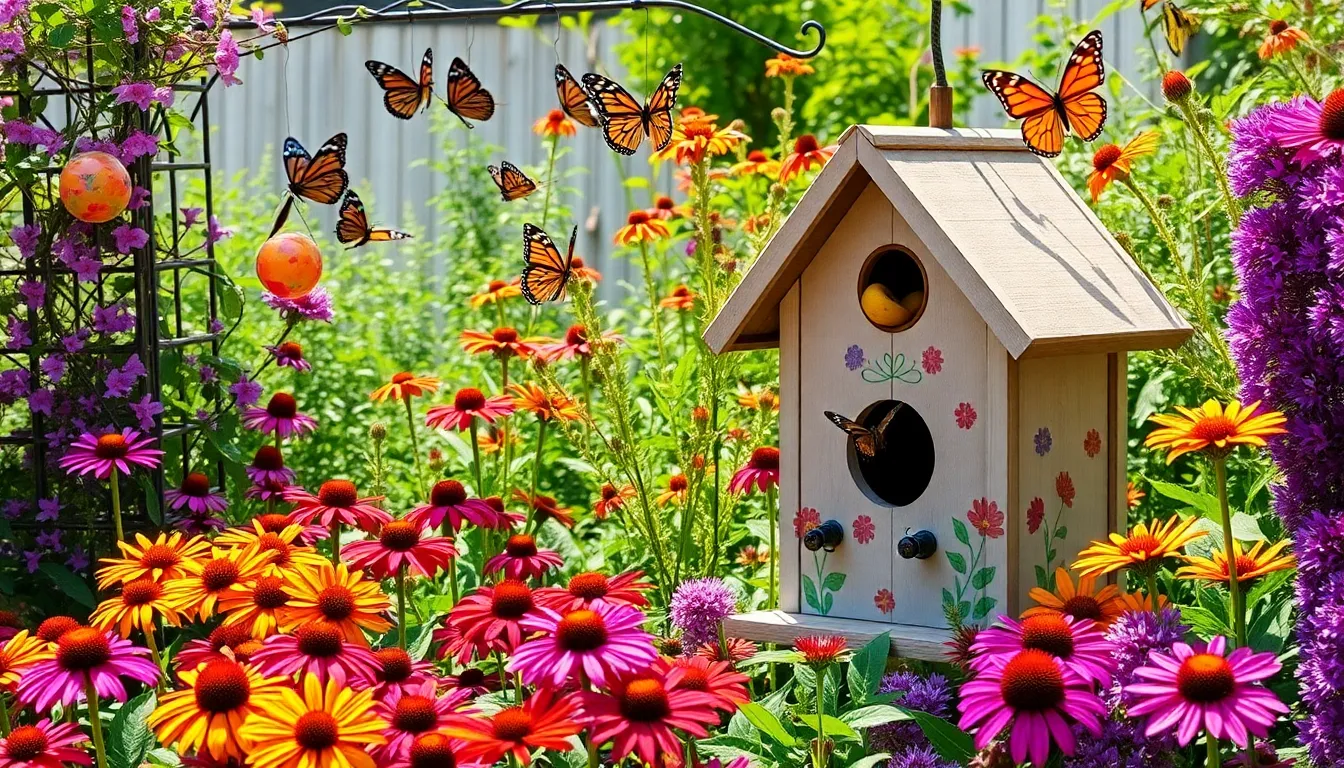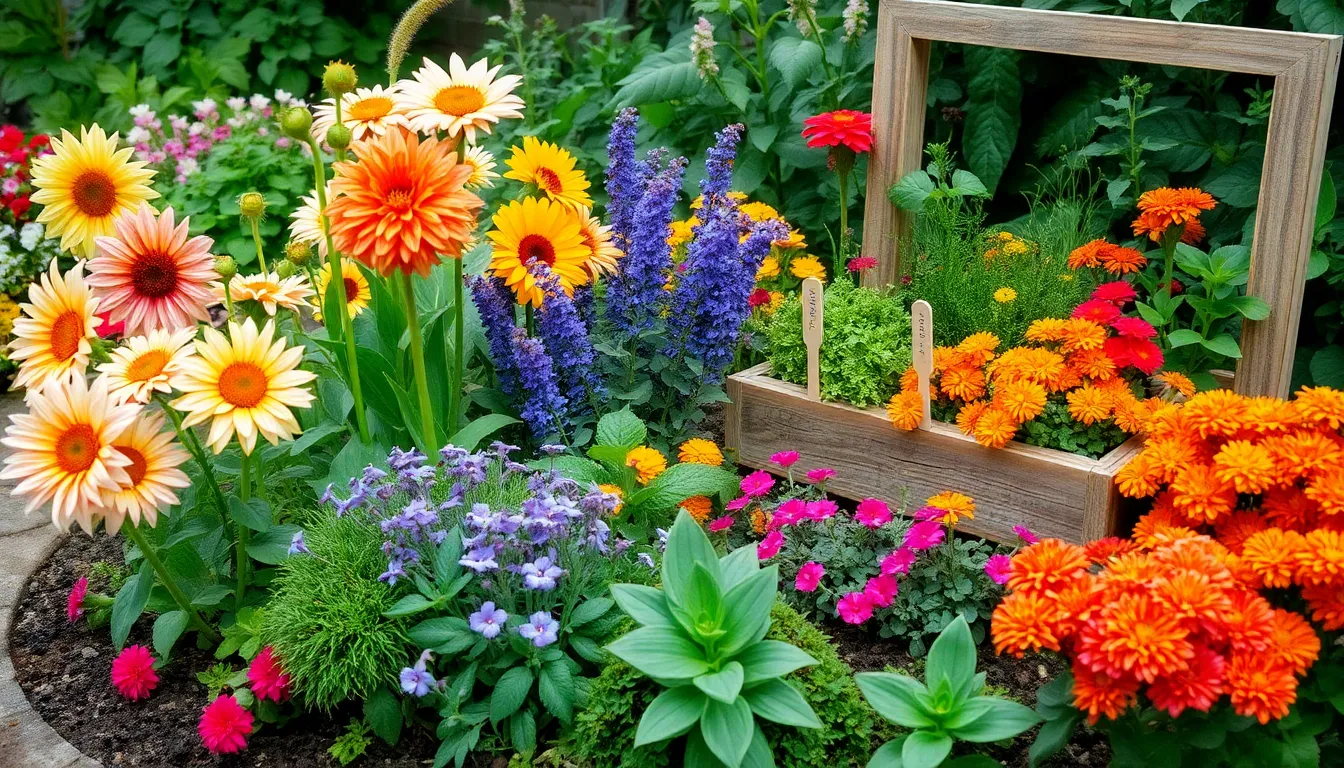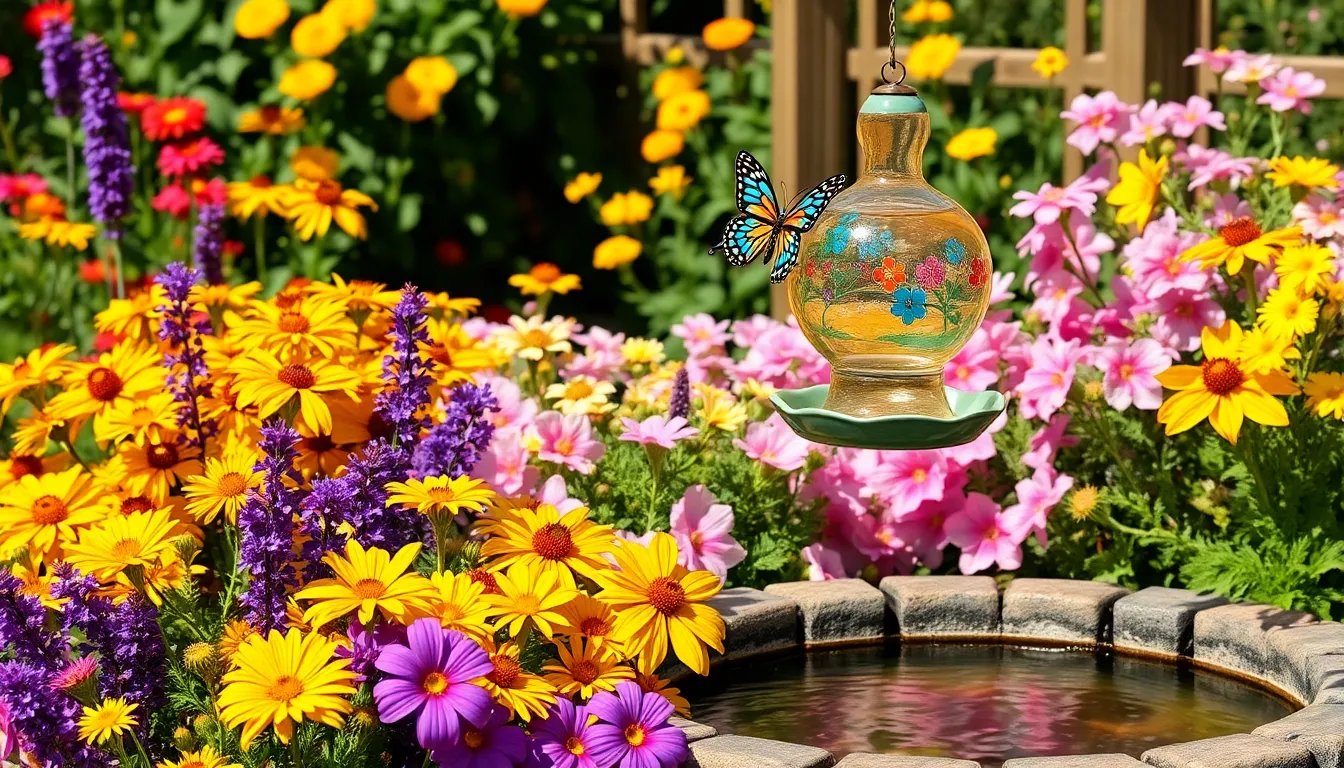Creating a butterfly garden isn’t just a delightful way to breathe life into your outdoor space; it’s a vital step toward nurturing our ecosystem. Whether you’re a green-thumbed veteran or just beginning your gardening journey, attracting these winged wonders can offer a sense of fulfillment and connection to nature that few other activities can match. By planting thoughtfully and sustainably, you can transform your garden into a flourishing haven for butterflies, all while supporting biodiversity.
In this article, we’ll explore twelve eco-friendly essentials that will help you create a vibrant butterfly paradise. From selecting native plants that provide the perfect habitat to incorporating water features that sustain life, these tips are designed to empower you with practical, earth-friendly strategies. You’ll discover how to design a garden that not only captivates the eye but also ensures that these delicate creatures have a safe and nourishing environment to thrive.
Our focus will be on sustainable practices, ensuring that your butterfly garden serves both beauty and purpose without compromising the health of the planet. As you delve into the essentials, you’ll gain insights into the importance of reducing chemical use and fostering natural habitats. Whether you’re planting your first milkweed or enhancing an existing garden, this guide will equip you with the knowledge to make informed, impactful choices.
Choosing Native Butterfly Plants
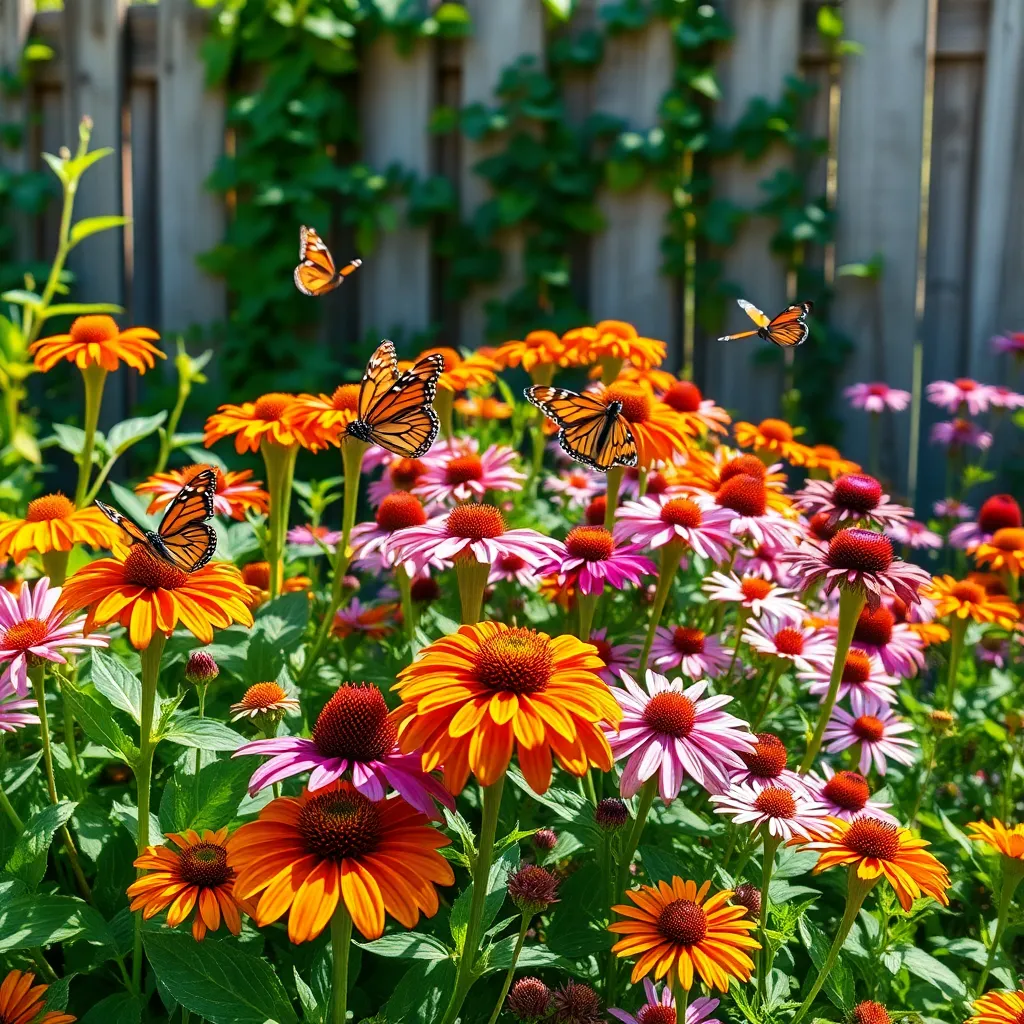
When choosing native butterfly plants, consider those that thrive in your local climate and soil conditions. Native plants are well-adapted to your area’s environment, requiring less water and maintenance, making them ideal for both beginners and seasoned gardeners.
To create a vibrant butterfly garden, select a variety of plants that bloom at different times of the year. This ensures continuous food sources for butterflies, attracting them to your garden throughout the seasons.
Research which native plants are particularly attractive to the butterfly species in your region. Milkweed, coneflower, and asters are excellent choices, as they provide essential nectar and are relatively easy to grow.
For optimal growth, plant your butterfly-friendly natives in a sunny location with well-drained soil. Water deeply but infrequently, allowing the soil to dry out between waterings, which mimics natural rainfall patterns and encourages deep root growth.
Advanced gardeners can enhance the biodiversity of their garden by incorporating a mix of host and nectar plants. Host plants, like parsley and dill, provide breeding ground for caterpillars, while nectar plants support adult butterflies, enriching the garden ecosystem.
Creating a Pesticide-Free Zone
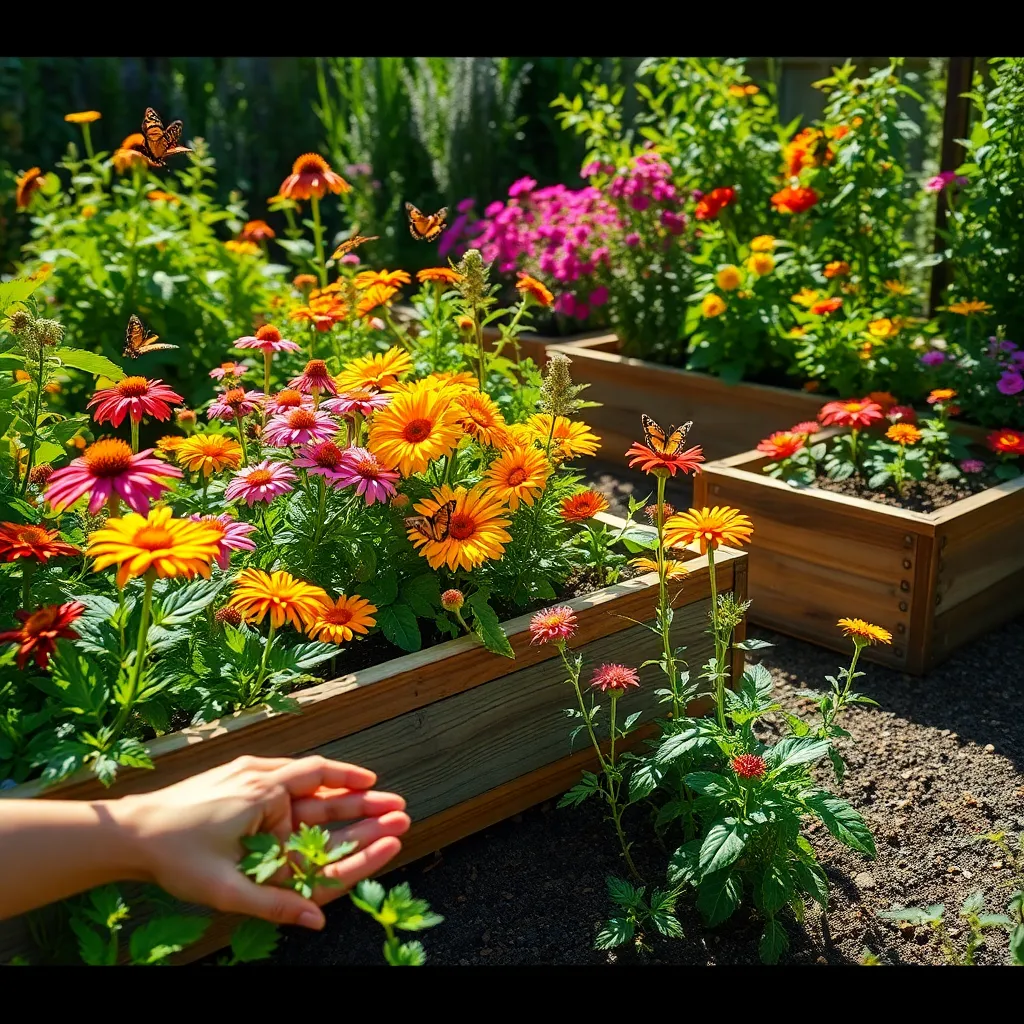
Creating a pesticide-free zone in your butterfly garden is a rewarding endeavor that benefits both your local environment and the butterflies you aim to attract. One effective technique is to introduce beneficial insects like ladybugs and lacewings, which naturally control pests by feeding on aphids and other harmful insects.
Instead of chemical pesticides, consider using organic solutions such as neem oil or insecticidal soap, which are less harmful to butterflies and their larvae. Ensure these applications are done early in the morning or late in the evening to minimize impact on pollinators.
To maintain a healthy ecosystem, focus on improving soil health through the use of compost and organic matter. This not only enhances soil fertility but also strengthens plants, making them more resistant to pests and diseases naturally.
Experienced gardeners might explore companion planting as a strategy to deter pests without chemicals. For instance, planting marigolds around your butterfly plants can help repel nematodes and other unwanted insects.
Essential Host Plants for Caterpillars
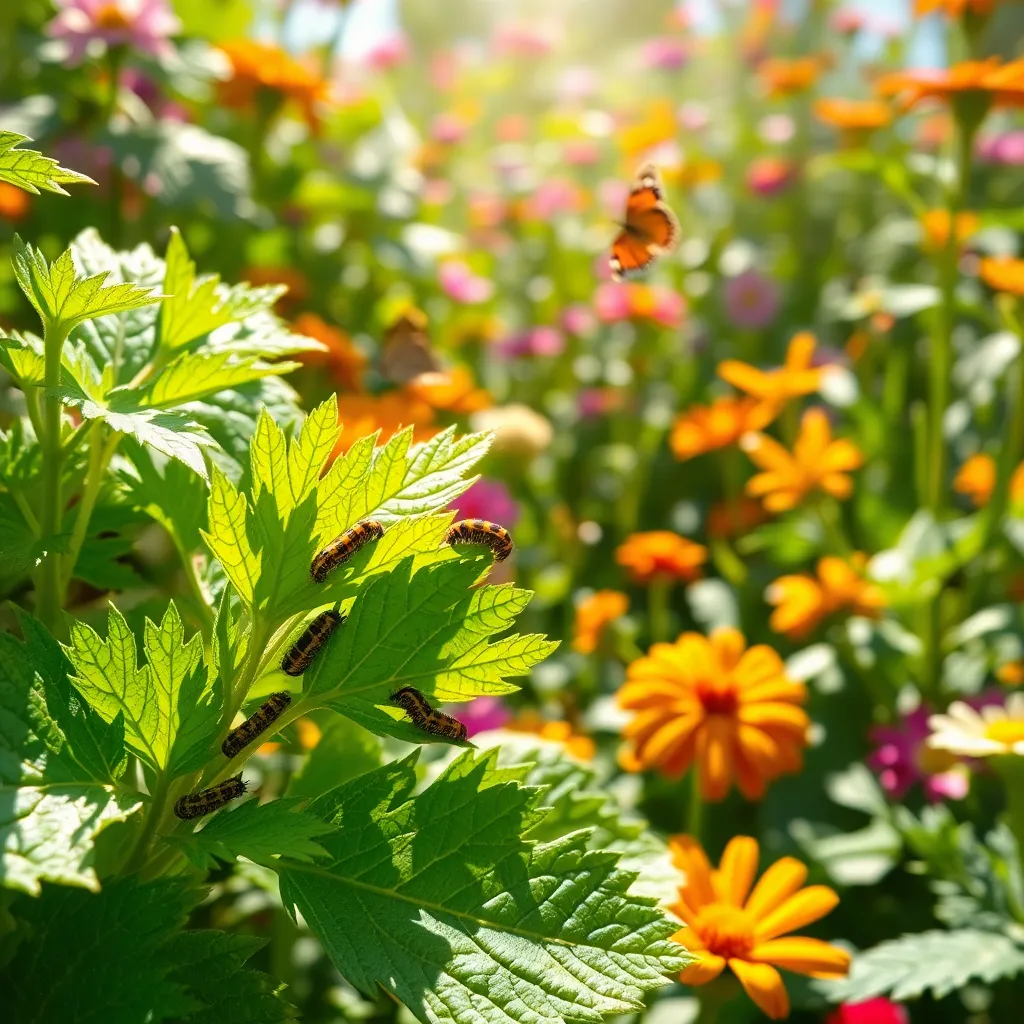
To support the life cycle of butterflies, incorporating essential host plants for caterpillars is crucial in your garden. By providing the right plants, you create a haven where butterflies can lay their eggs, and caterpillars can thrive.
Consider planting milkweed for monarch butterflies, as it is the sole host plant for their caterpillars. Milkweed thrives in well-drained soil and requires full sun, making it a hardy choice for many gardens.
Dill, fennel, and parsley are excellent choices for attracting black swallowtail butterflies. These plants prefer a sunny location with moderately fertile soil, and they also add a delightful aroma to your garden.
For a more advanced approach, include native grasses like little bluestem and switchgrass to support various skipper butterflies. These grasses are drought-tolerant and thrive in a range of soil conditions, providing a resilient option for your butterfly garden.
Maintaining these plants is straightforward, but regular watering is essential during dry spells to ensure they remain healthy and inviting to caterpillars. Mulching around the plants can help retain moisture and suppress weeds, promoting a healthy growth environment.
Nectar-Rich Flowers for Adults
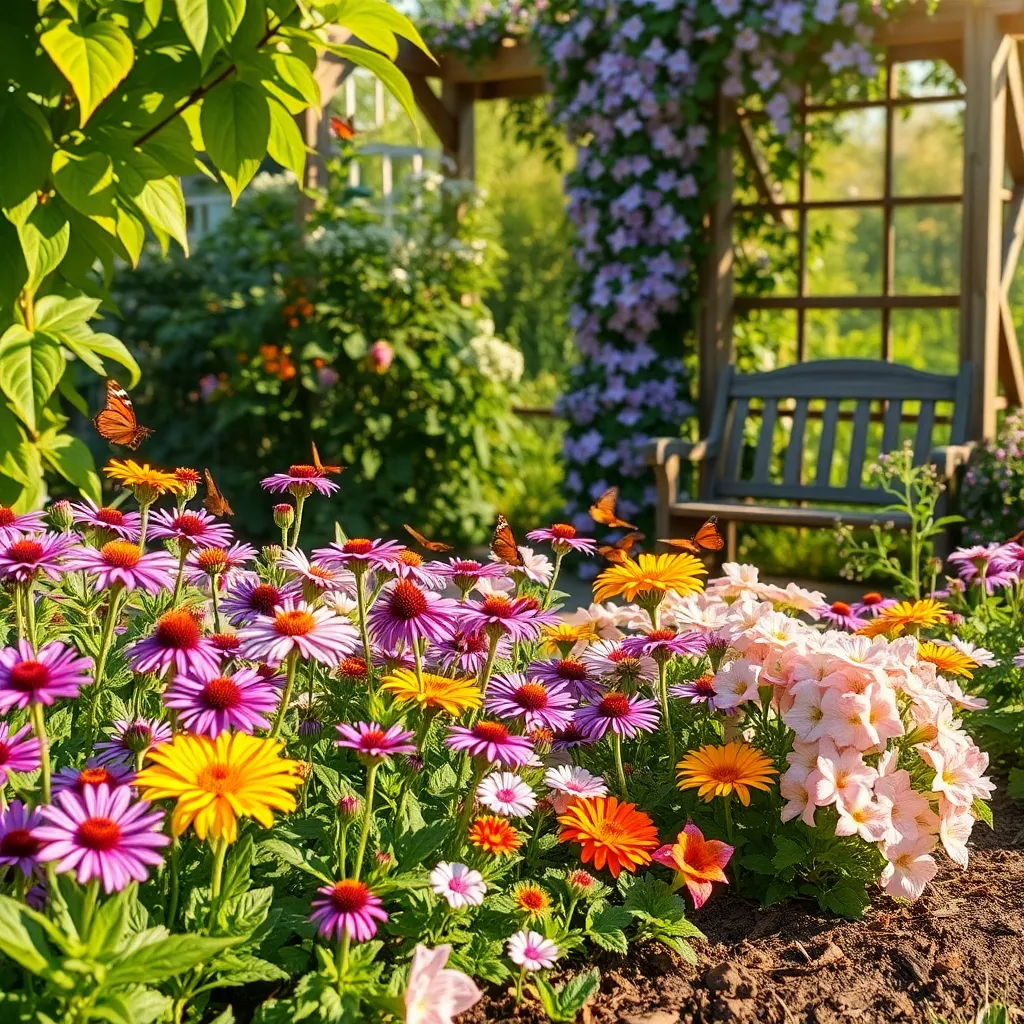
To attract adult butterflies to your garden, consider planting nectar-rich flowers that bloom throughout the growing season. Butterflies are particularly drawn to brightly colored flowers, so choose varieties like zinnias, cosmos, and lantanas.
Ensure these flowers are planted in a sunny spot, as butterflies prefer warm, sunny areas to feed. Regular deadheading and pruning are essential to encourage continuous blooming and keep your plants healthy.
For beginners, zinnias are an excellent choice due to their easy care and ability to thrive in various soil types. Plant them in well-drained soil and water them moderately, allowing the top inch of soil to dry out between waterings.
More experienced gardeners might experiment with growing butterfly bushes, which offer large clusters of blooms. These shrubs require full sun and well-drained soil and benefit from annual pruning to maintain their shape and promote vigorous flowering.
Incorporating Water Sources Naturally
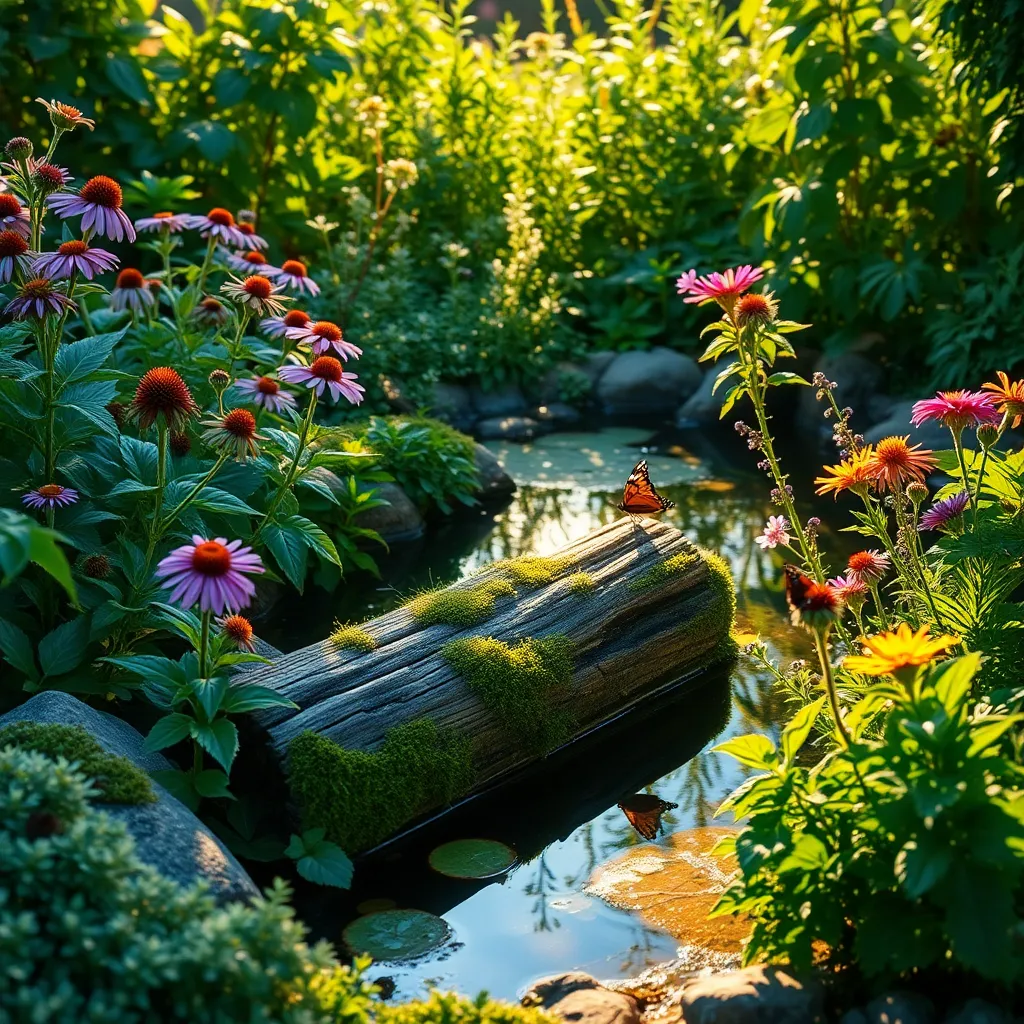
Incorporating natural water sources into your butterfly garden can significantly enhance its appeal and ecological balance. A simple way to achieve this is by creating a shallow water feature or puddling area, which provides butterflies with essential moisture and minerals.
Consider using a shallow dish filled with sand and water to mimic a natural mud puddle. Adding flat stones to the dish not only offers resting spots for butterflies but also aids in maintaining the right water level.
For those with more space, a small pond or bog garden can be a fantastic addition. These features attract not only butterflies but also a range of beneficial insects and wildlife, promoting a more vibrant garden ecosystem.
When designing a pond, select native aquatic plants that thrive in your climate to ensure low maintenance and ecological harmony. Adding a solar-powered fountain can help keep the water oxygenated without relying on electricity, making it an eco-friendly choice.
Designing Sheltered Butterfly Habitats
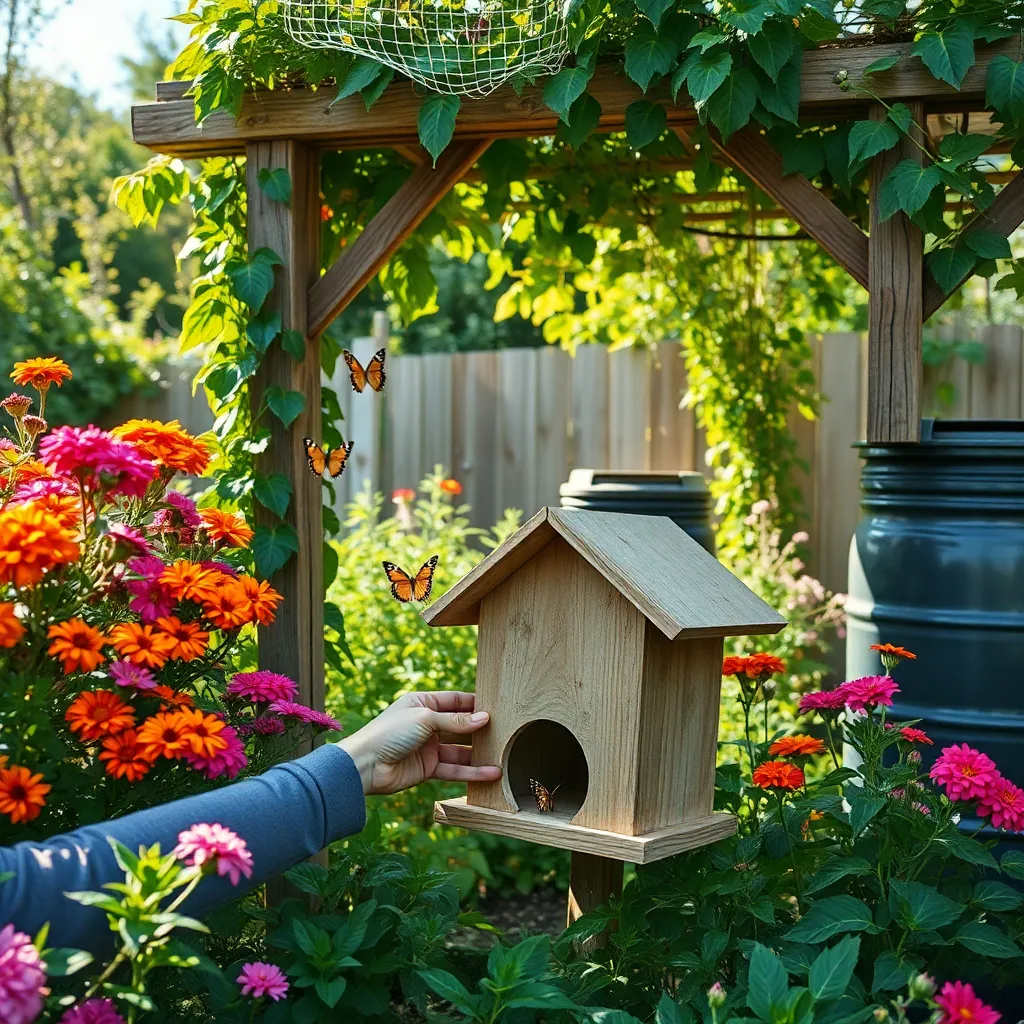
Creating a sheltered butterfly habitat involves selecting the right plants and positioning them effectively. Choose a location in your garden that provides a mix of sun and shade, ensuring butterflies can regulate their body temperature as needed.
Native plants are crucial as they offer familiar food sources for local butterfly species. Research and include plants like milkweed, asters, and coneflowers, which are known to attract butterflies and cater to their lifecycle needs.
To protect butterflies from harsh weather conditions, consider planting hedges or using garden structures. Hedges such as boxwood or privet can provide windbreaks, while trellises or pergolas can offer sheltered resting spots for butterflies.
Advanced gardeners can enhance these habitats by creating microclimates within the garden. Use stones or small water features to moderate temperature fluctuations, offering butterflies a comfortable environment throughout the day.
Sustainable Mulching Practices
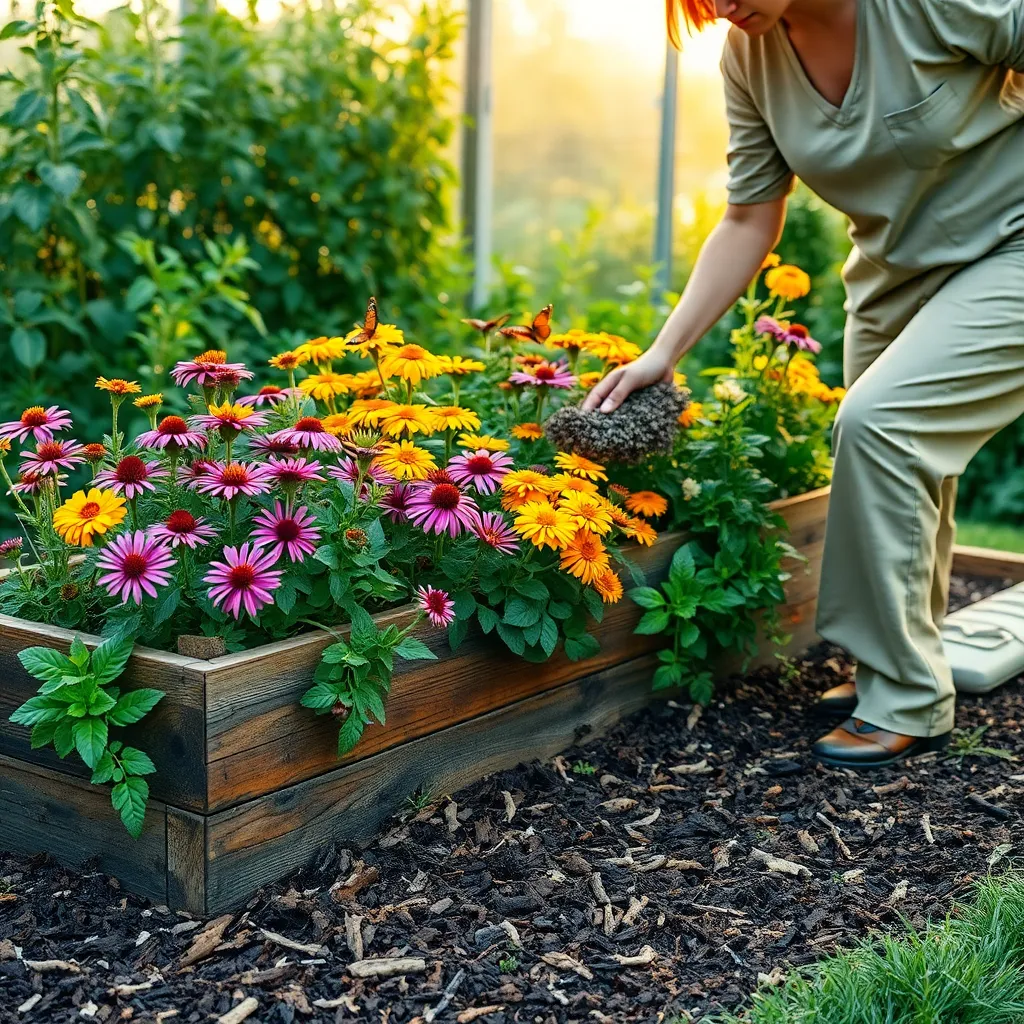
To create a butterfly-friendly garden that thrives sustainably, employing eco-friendly mulching practices is essential. Mulching not only conserves soil moisture, which is crucial during dry spells, but it also helps suppress weeds naturally, reducing the need for chemical interventions.
Organic mulches such as shredded leaves, straw, or grass clippings are excellent choices for butterfly gardens. They gradually decompose, enriching the soil with nutrients and fostering a healthy environment for both plants and the butterflies they attract.
Begin by applying a layer of mulch about 2 to 3 inches thick around the base of your plants, ensuring it does not touch the stems to prevent rot. This practice helps maintain a stable soil temperature, which is beneficial for the roots and supports the butterflies’ habitat needs.
For advanced gardeners, consider using a combination of mulch types to cater to different plants’ needs. For instance, combining pine needles with compost can create an ideal pH for acid-loving plants, making your garden diverse and inviting for butterflies.
Composting for a Healthy Garden
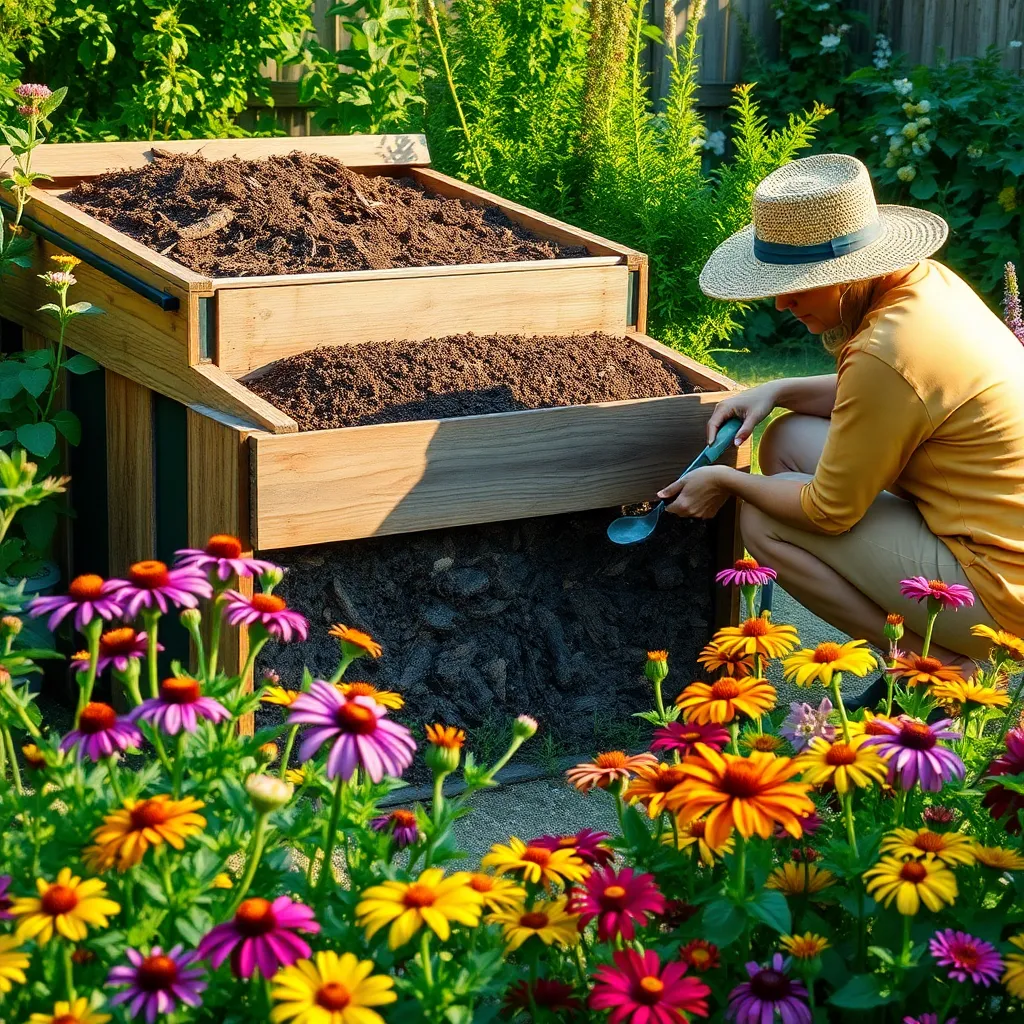
Transform kitchen scraps and yard waste into rich compost to enhance your butterfly garden’s soil health. Composting not only reduces waste but also provides essential nutrients for plants, promoting robust growth and vibrant blooms.
Start by selecting a compost bin that suits your space, whether it’s a tumbling bin for small gardens or a larger stationary bin for expansive areas. Aim to maintain a balance of browns (carbon-rich materials like dried leaves) and greens (nitrogen-rich materials like vegetable scraps) for optimal decomposition.
Regularly turning your compost pile will accelerate the breakdown process, ensuring a steady supply of nutrient-rich compost. Add moisture as needed, keeping the pile as damp as a wrung-out sponge, to support the microbial activity essential for composting.
Once your compost is ready, typically in 2 to 6 months depending on conditions, incorporate it into your garden beds as a top dressing or mix it into the soil. This not only improves soil structure and drainage but also enhances its ability to retain moisture, reducing the need for frequent watering.
Using Recycled Garden Materials
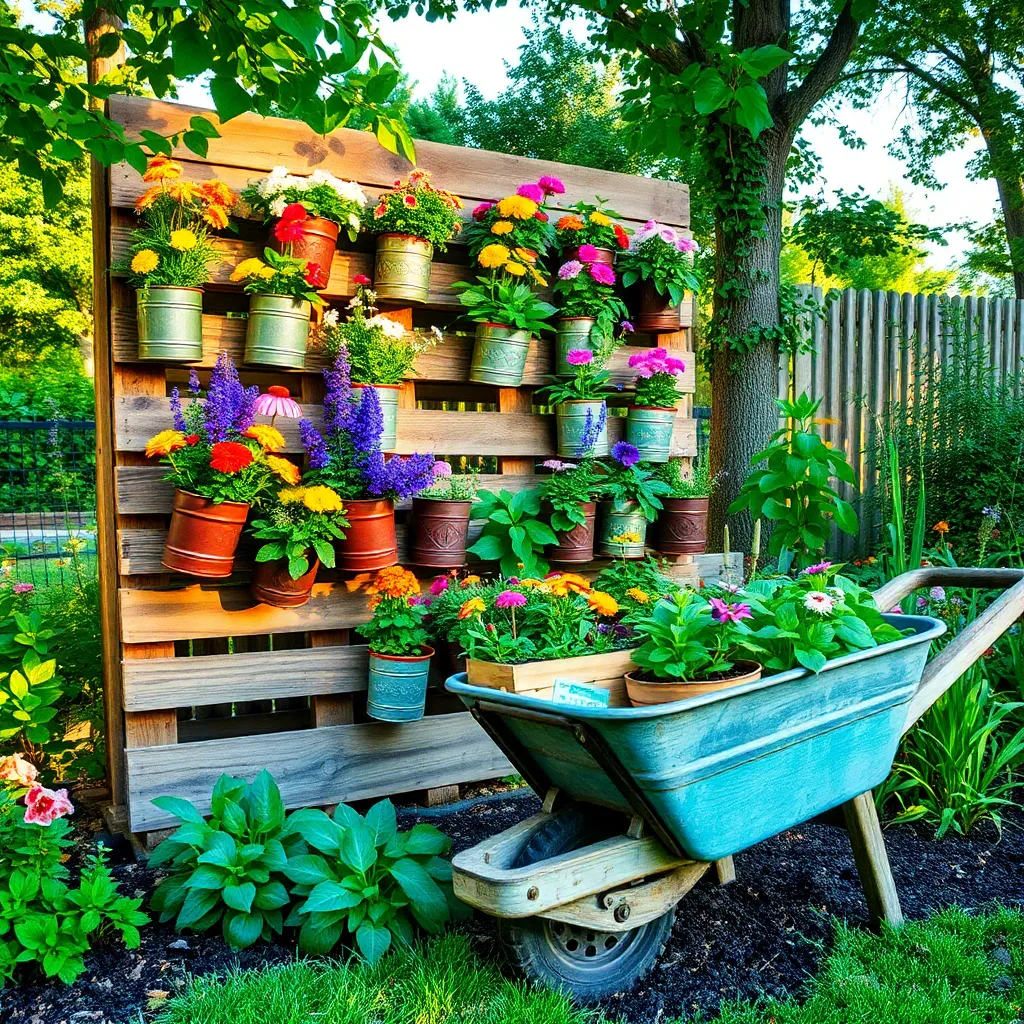
Recycling materials in your garden not only benefits the environment but also saves you money. Start by using old newspapers as mulch; they effectively suppress weeds and retain soil moisture, creating a thriving habitat for butterflies.
Another great option is to repurpose plastic containers as planting pots. Ensure they have adequate drainage holes to prevent waterlogging, which can harm your plants and deter butterflies from visiting.
For those with a creative streak, transforming broken terracotta pots into decorative garden borders can add a unique charm. Their porous nature allows for excellent soil aeration, promoting healthy root growth and attracting more pollinators.
Old wooden pallets can be converted into vertical gardens, which are perfect for small spaces. Secure the pallets firmly and use them to grow nectar-rich plants like lavender and verbena, providing ample food for butterflies.
Encouraging Biodiversity in Design
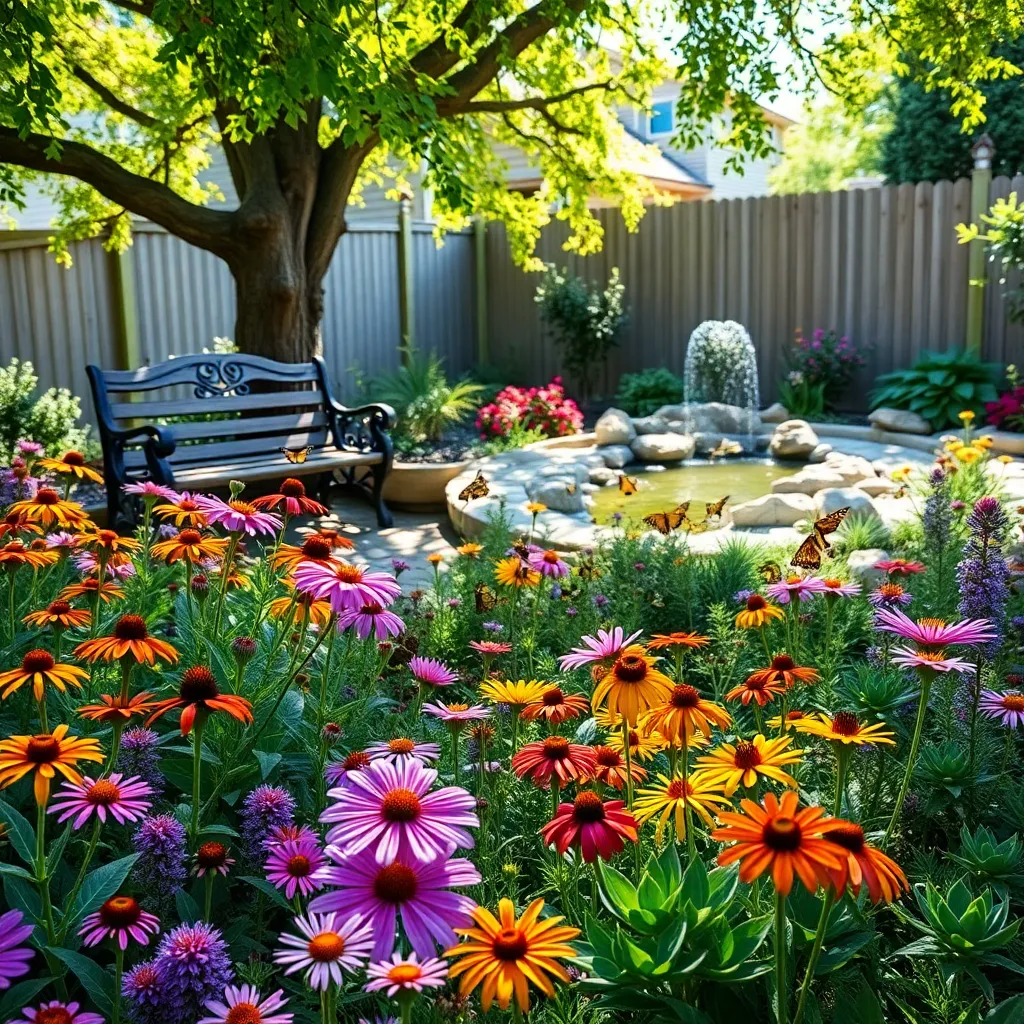
To encourage biodiversity in your butterfly garden, consider planting a diverse array of native plants. Native species are well-suited to the local climate and soil conditions, making them easier to maintain and more likely to attract a wider range of pollinators.
Incorporate plants with varying bloom times to ensure a continuous food source for butterflies. This can be achieved by selecting a mix of early, mid, and late-season flowering plants, such as milkweed, coneflowers, and asters.
Adding layers to your garden will create multiple habitats for different species. Use a combination of ground covers, shrubs, and trees to provide shelter and nesting sites for butterflies and other beneficial insects.
It’s important to avoid pesticides, as they can harm not just unwanted pests but also the butterflies and beneficial insects you’re aiming to attract. Instead, consider planting pest-repelling plants like marigolds and lavender, which can naturally deter unwanted insects.
To further support biodiversity, include a small water feature, like a shallow birdbath or a damp sand pit, to offer a drinking and basking spot for butterflies. Ensure these water sources have gently sloping edges or small rocks for perching, which will make them accessible and safe for the butterflies.
Maintaining Eco-Friendly Pest Control
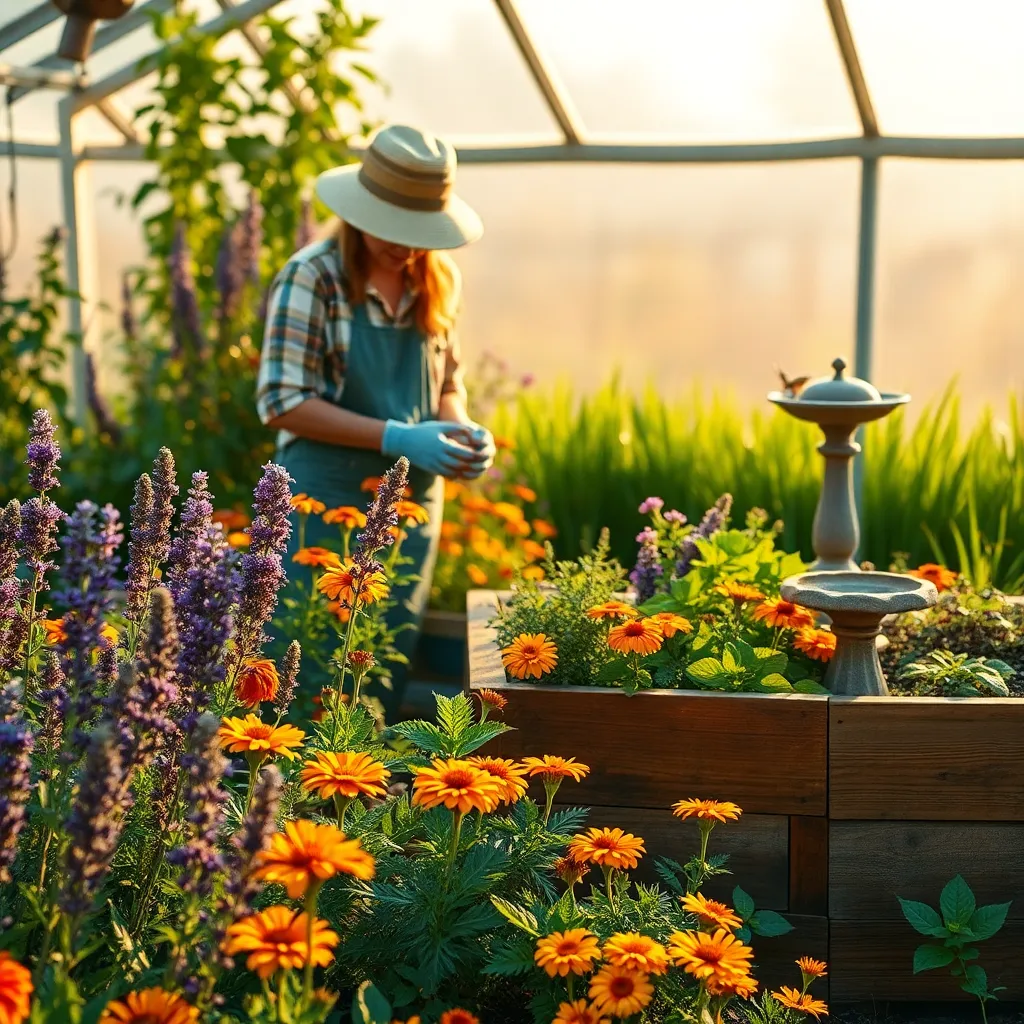
Implementing eco-friendly pest control in your butterfly garden involves understanding the ecosystem you’ve created. Start by planting a diverse range of native plants that naturally attract beneficial insects, which can help control pests without the need for chemicals.
Introduce companion planting techniques to deter pests effectively. For instance, planting basil near tomatoes can help repel aphids, while marigolds can keep nematodes away from your vegetables.
Regularly inspect your plants for signs of pest activity, such as holes in leaves or discolored foliage. Hand-picking larger insects like caterpillars and beetles can be an immediate and natural method to reduce pest populations.
Creating a balanced habitat with plenty of nectar and host plants encourages natural predators to thrive. Ladybugs, lacewings, and birds can significantly reduce pest numbers, creating a harmonious garden environment.
Seasonal Care for Year-Round Appeal
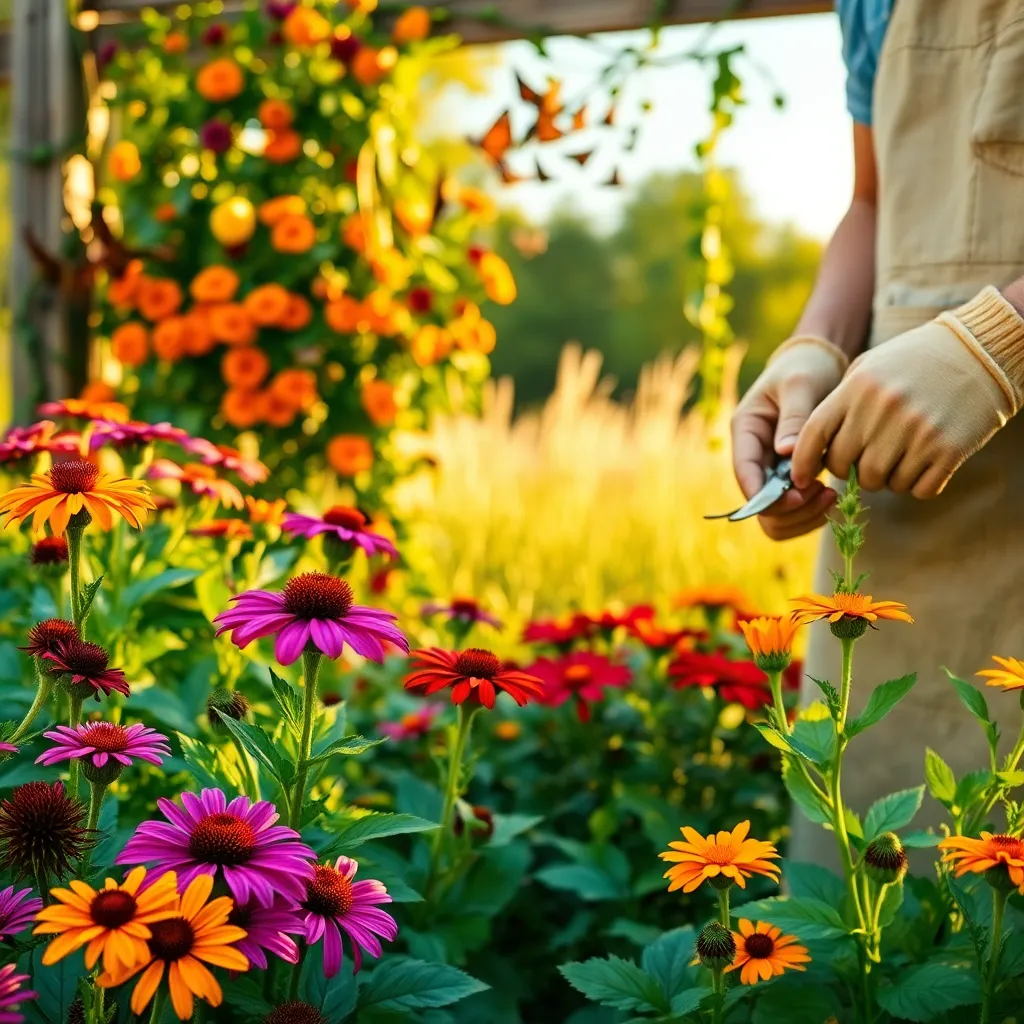
To keep your butterfly garden vibrant all year, adapt your care routine to the changing seasons. Begin by understanding the specific needs of your plants during each part of the year, ensuring they thrive no matter the weather.
In spring, focus on soil health by adding a layer of organic compost, which enriches the soil and improves its structure. This is also the perfect time to plant milkweed and nectar-rich flowers, as these are essential for attracting butterflies.
Summer requires diligent watering practices to keep your garden lush, especially during dry spells. Opt for a deep watering technique once a week to encourage strong root growth, rather than frequent, shallow watering.
Autumn is the season to prepare your garden for the colder months ahead by mulching around your plants. This helps retain moisture and provides insulation against cold temperatures, giving your garden a head start for spring.
During winter, focus on protecting the more delicate plants by covering them with burlap or using frost cloths. Additionally, take this downtime to plan your garden layout and order seeds for the next growing season, ensuring a seamless transition into spring gardening activities.
Conclusion: Growing Success with These Plants
In creating a thriving butterfly garden, the essentials mirror the nurturing qualities vital for healthy relationships. We’ve journeyed through 12 eco-friendly concepts: understanding native plants, cultivating diversity, creating inviting habitats, and sustaining nourishment, all while respecting nature’s balance. Just as a garden benefits from careful planning and attentive care, relationships flourish when built on understanding, diversity, and respect.
Now, take a moment to apply these principles to your own relationships. Start by identifying one area where you can introduce more diversity or cultivate a new shared interest. This small step can reinvigorate and strengthen your connection, much like introducing a new plant revitalizes a garden.
Remember, relationships require ongoing care and commitment. Save this article as a valuable guide to revisit each of these nurturing concepts. Bookmark it now, and let it serve as a reminder of the tender attention your relationships deserve.
As you continue to apply these eco-friendly principles, envision your relationships blossoming into vibrant, enduring connections. Your commitment today sets the foundation for a future filled with mutual growth and harmony. Embrace the journey and cultivate love that, like a butterfly garden, is both resilient and beautiful.

